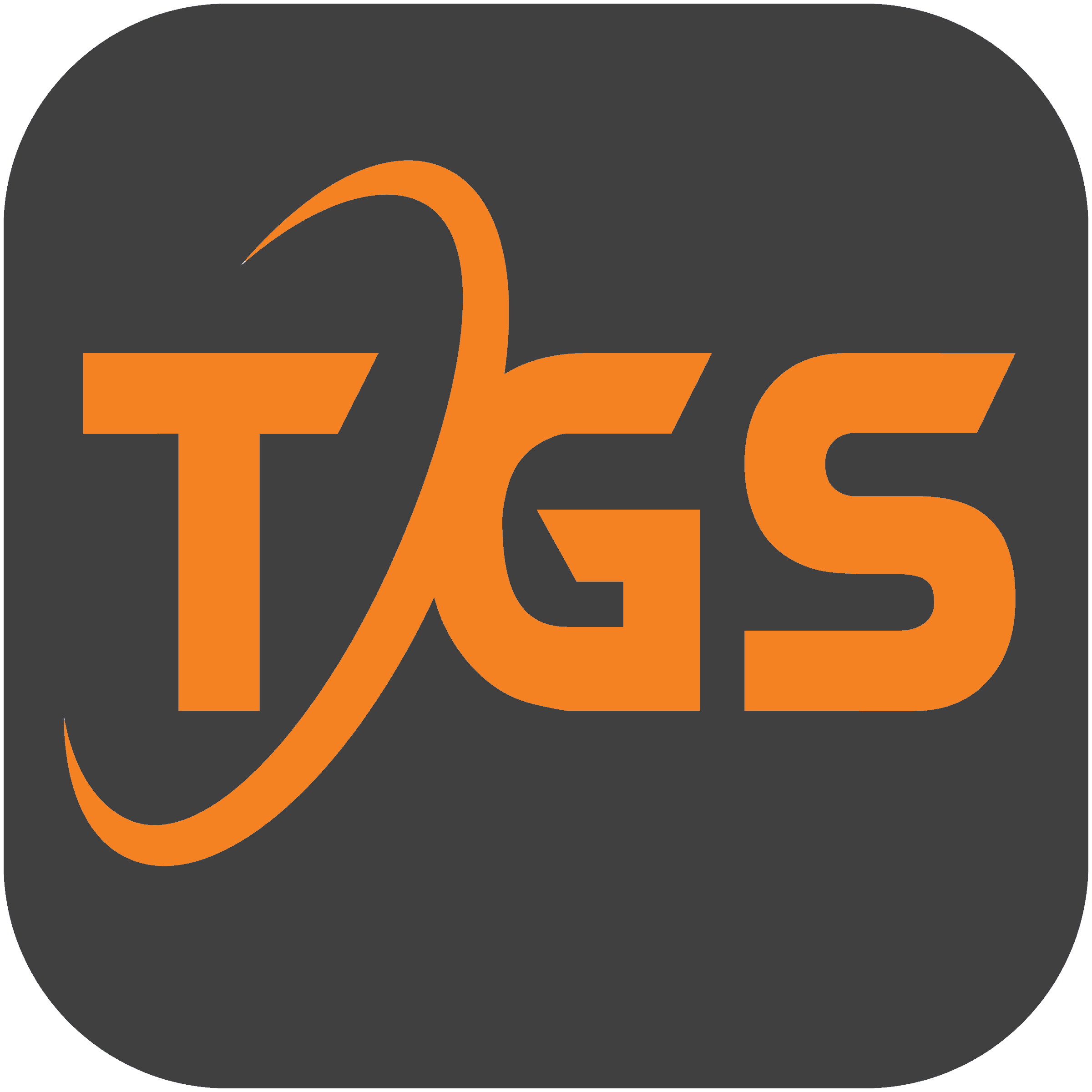
What is a medical summary report?
Medical summary report is the complete medical history of an individual with details of medical events timeline in a chronological pattern.
Medical summary report means different things for different industries that use them. The end-users are essentially the following four industries:
- Insurance company – Underwriting and risk assessment
- Legal user – Personal injury cases, mass torts, disability claims
- linical trials for pharmaceutical companies – Study retrospective data
- Healthcare providers – Continued treatment
What to look for before writing a summary report?
Insurance company – Underwriting for risk assessment and life expectancy.
The underwriter reviews the medical records, keeping in mind the insured’s risks to the insurance company, and the premium is fixed based on that assessment. If an applicant has a pre-existing disease and these are chronic or ongoing for more than 2-3 years, he is more at risk of developing complications and requiring hospitalization. A smoker is more likely to develop cardiopulmonary complications and cancer, viz a viz a non-smoker. An underwriter needs to consider the applicant’s lifestyle, fitness factors, mobility, weight, employment status, and capability to do all activities of daily living.
For life expectancy settlements, medical summaries highlight the disease, its severity, progression, improvement, and remission. Medical chronology and summaries made by Telegenisys are generated by the software and reviewed by humans. They are a combination of machine and human intelligence at work together. These summary reports offer a more profound view to underwriters so that more complex cases can be easily analyzed in detail.
Legal user – Personal injury cases, mass torts, disability claims
As an LNC or a paralegal reviewing medical records, you should clearly understand the client’s grievance, demand, and rights. The medical summary will be created keeping in mind the allegations and losses incurred thereof. The summary should analyze the details of every allegation separately. The purpose of the summary report should be to help the lawyer understand the medical rationale to address the legal issues pertinent to it.
Clinical trials for pharmaceutical companies – Study retrospective data
Clinical trials require the patient’s old records that list the diagnostics, treatments, effect of treatment, and disease progression to determine the eligibility and potential for optimal benefit. Old diagnostic tests, the effect of medications, and sensitivity to the current trial help assess the patient’s fitness to undergo the new experimental treatment. The reviewer needs to make sure that all records are complete and include all diagnostics reports.
Healthcare providers – Continued care
The medical care provider needs summaries to provide ongoing care and current diagnosis or why the patient visited the physician primarily. All past medical conditions and treatments provided, allergies, and fitness status. A medical care provider needs quick access to the previous medical treatments to see what affected the patient adversely or under which treatment the patient is doing well. This kind of summary report is very different from the ones used by companies for fiscal benefit.
How to write a medical summary report
The most vital components of a medical summary report are the following, regardless of the end-user:
- The patient demographics to ensure correct patient
- Dates when the medical event occurred
- List of the providers that treated the patients
- Type of visit or event they were
- List of medications
- List of lab work done
- List of radiology diagnostics and treatments
These are available in the reports, but a reviewer has to scroll through endless pages to get the details. Unless they make notes of every report, there is no way to determine where you saw a specific entry while scrolling. This method of review is tedious, painstaking, and time-consuming work.
Brief description of our example of summary report
Telegenisys has resolved this problem by creating VMR. This software generates chronologies. These chronologies give you all the above requirements in a unified bookmarked and indexed pdf file and a spreadsheet with hyperlinks to the source documents. You will never miss out on a single document in your review, and you can keep going back to the source to verify. The comments section will show the reviewer what the document is about. You can pull out a medical summary report based on the comments in this output.
Patient demographic
This section contains all the personal information of the patient that includes the most recent name, age, gender, BMI, vital signs as well as tobacco status, insurance details, and date range of the records.
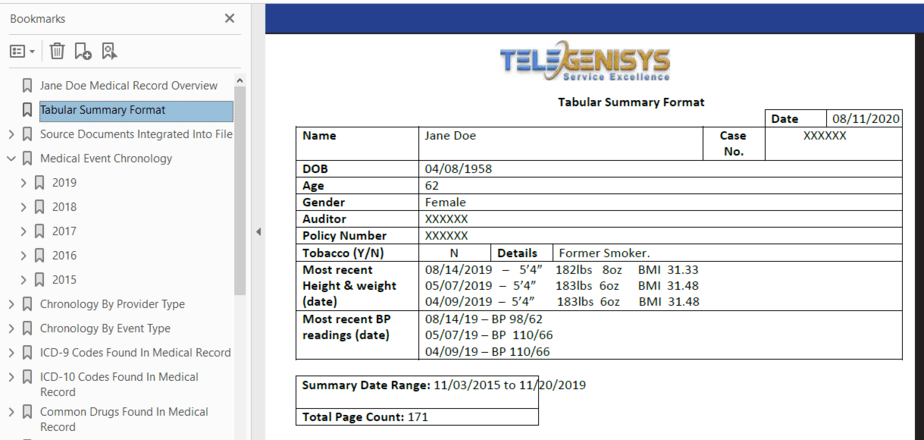
Hyperlinks take you to the source documents, where the findings are listed.
The example below is a tabular summary doc. Every entry in the summary has a hyperlink that redirects the user to the source document. Entries contain the complaint and the outcome of the visit. This can be customized to whatever level of detail is needed for the review. If the reviewer is unsure of the content they can immediately go to the page and review it further. The reviewer is able to decide which reports he needs to evaluate in further detail.
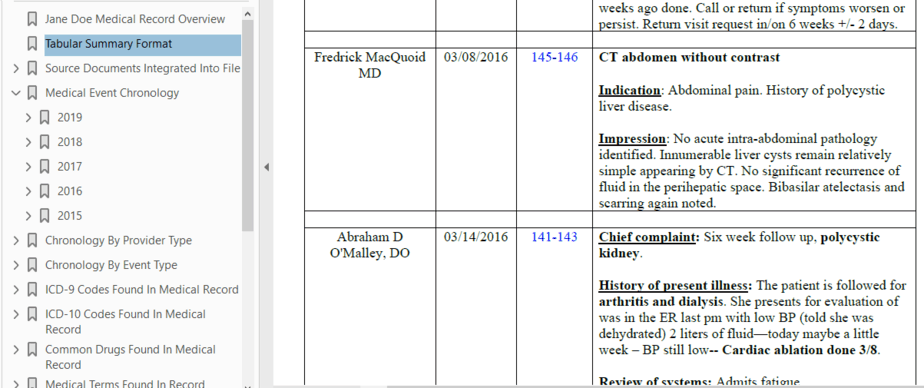
Narrative summary report for an attorney or LNC
Details in the demographics section change. Included here are addresses of home and employer, date of injury, insurance carrier, employment status is included. Next comes the demand note as instructed by the client. The summary starts with a brief description of the accident, and the present-day status, and how the accident affected the client’s ability to earn and take care of himself independently. The summary further breaks down the medical records and shows in detail the accident, the initial hospitalization, all the diagnostics, disability reviews if available.
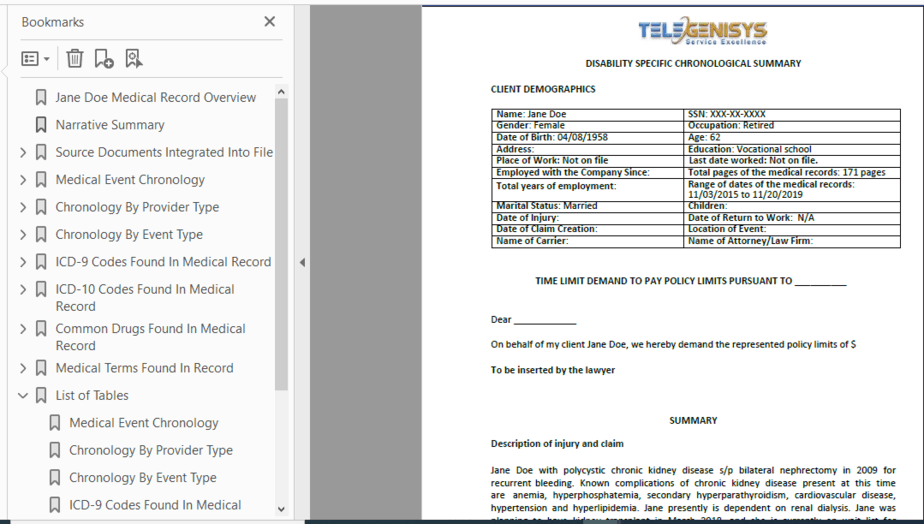
Attending physician’s statement summary
An APS summary is often used by insurance underwriters when clarity is missing in the available records. The attending physician is best equipped to give medical opinions about the patient’s health status. These summaries are often extensive and to summarize them one has to be very detailed. Not even a single report can be missed. Detailed information from each record is outlined in word or excel and hyperlinked to the source pdf.
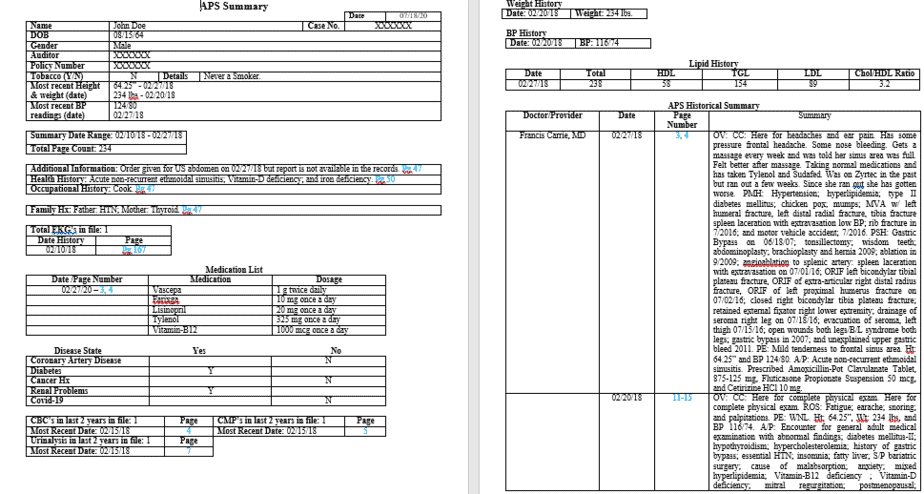
Attending physician’s statement summary
An APS summary is often used by insurance underwriters when clarity is missing in the available records. The attending physician is best equipped to give medical opinions about the patient’s health status. These summaries are often extensive and to summarize them one has to be very detailed. Not even a single report can be missed. Detailed information from each record is outlined in word or excel and hyperlinked to the source pdf.
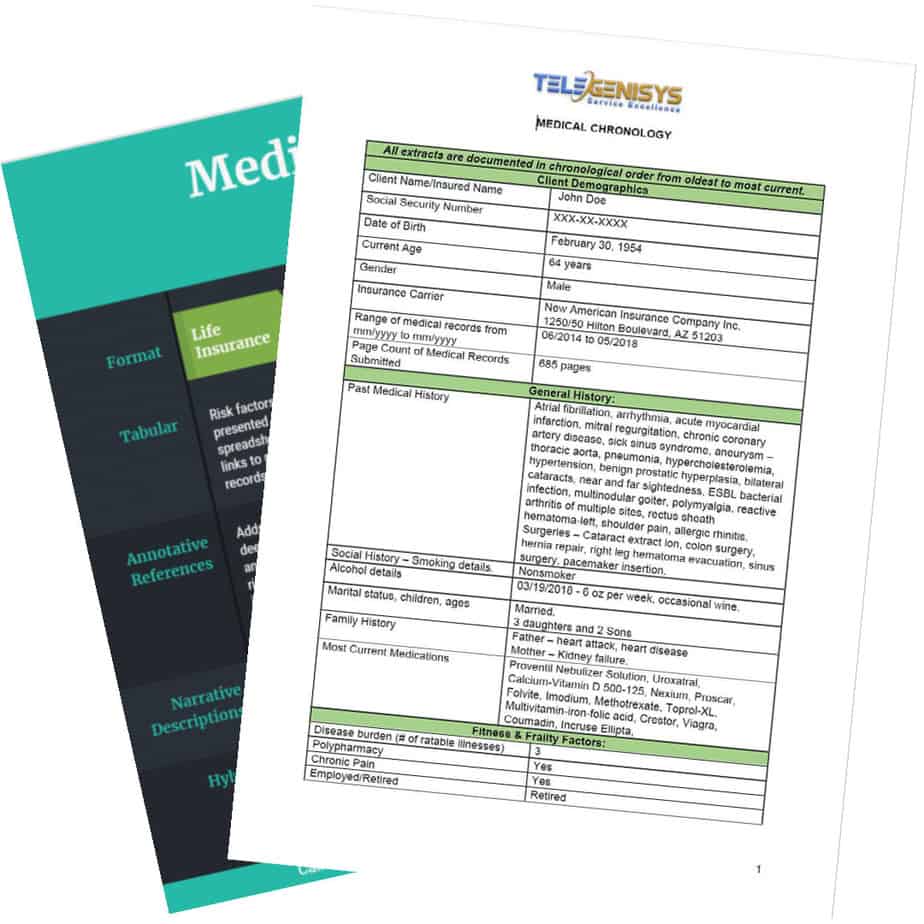
Request medical summary free document set
- Multiple options to customize and format summaries to suit specific requirements
- Free medical summary report example













